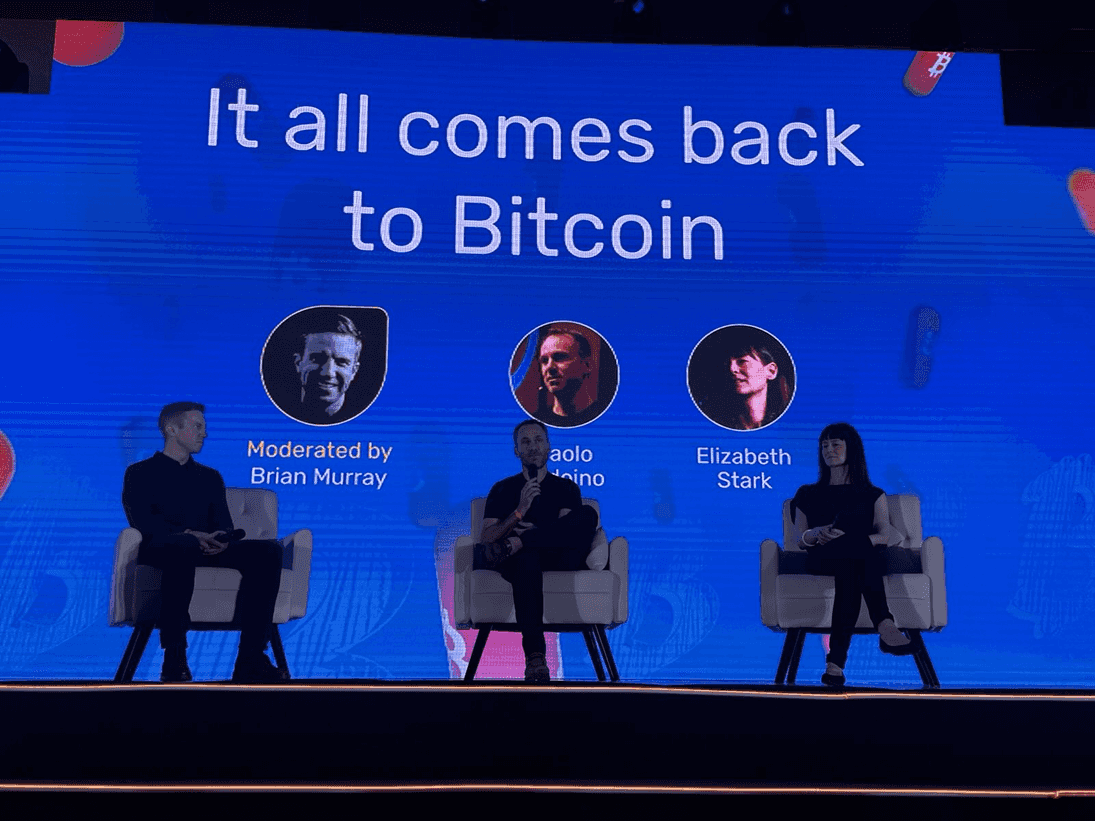Announcing Taproot Assets v0.6: Bitcoin’s Decentralized FX Network Has Arrived ⚡💱🛬
Today we're excited to announce our latest release of Taproot Assets v0.6! Taproot Assets is the first multi-asset Lightning protocol on mainnet, where assets like stablecoins can be minted on bitcoin and sent via the Lightning Network instantly for low fees. This functionality enables the evolution of the Lightning Network into a multi-asset network anchored in Bitcoin's security and decentralization.
Since our last release, Lightning Labs CEO Elizabeth Stark and Tether CEO Paolo Ardoino announced that Tether is bringing USDT to bitcoin, with both on-chain transactions and Lightning Network support. Once USDT is fully integrated with the Lightning Network, users worldwide will be able to make cross-border payments that settle instantly and at a fraction of the cost of other networks. Even today, users can utilize bridged USD stablecoins (USDT and USDC) and native stablecoins (DePix and GBP) through applications and SDKs like Speed Wallet, LnFi, and Joltz.

We are incredibly grateful to the bitcoin and Lightning developer community for their support in providing feedback on the protocol, testing early versions of the software, and building the initial products for end users. We are continually impressed by the level of building and excitement from developers pushing Taproot Assets adoption forward. All of this builder energy has resulted in a lot of helpful developer feedback that we've addressed in this release.
Simpler Taproot Assets Lightning Flows ⚡
With the Taproot Assets protocol, there is native support for ongoing issuance for fungible assets (e.g. stablecoins). Specifically, if a stablecoin issuer minted two batches of the same stablecoin at different times, it is essential that the assets within each batch are fungible. To handle this use case, minters can use the --new_grouped_asset option when minting to ensure assets share a group_key identifier, providing provenance verification and asset fungibility. The group_key identifier simplifies the user experience, as users can be sure that all assets with the same group_key are fungible with each other. Each tranche is also assigned a normal asset_id, which enables uniquely addressing a given tranche.
Previously, when using Taproot Assets on Lightning, developers and users had to use the asset_id to fund channels, send, and receive payments. With assets like stablecoins where there are multiple tranches, this asset_id-based workflow became cumbersome for developers to juggle. So, in the latest release, developers can now use the group_key identifier for all Lightning flows including funding a channel, paying an invoice, and receiving payments.
This release also incorporates enhancements to the RFQ (Request for Quote) protocol, which enable users to agree upon a time-limited price quote with the edge nodes, enabling a seamless send and receive flow using the existing BOLT 11 invoice format. Specifically, the RFQ software within the daemon now automatically handles group_key identifiers to make it easier for developers to manage their Lightning asset flows.
Larger and More Reliable Asset Transactions on Lightning 📈
As mentioned above, the Request for Quote (RFQ) functionality allows for the receiver of the payment to ask the node providing liquidity on Taproot Assets for a time-limited price quote between the relevant asset and bitcoin. These edge nodes provide a critical service by converting assets to and from bitcoin at the edges of the network, enabling Taproot Assets on Lightning to act as a decentralized foreign exchange network. For instance, a sender can choose their desired asset to send (USD) and the receiver can choose their desired asset to receive (BTC). These conversions and negotiations happen in the background, so that users can simply tap into this currency-agnostic payment network.
In previous releases, for simplicity, the invoice generator would only provide the payment sender with one final hop to reach the destination. In this case, there was only one edge node option for reaching the receiver. With the improvements in the latest release, the receiver can provide multiple incoming paths to the destination, which the sending node is capable of handling. With this release, the receiver node can combine up to 20 incoming Taproot Assets channels from edge nodes, which significantly improves payment reliability.
Taproot Assets payment receivers can now request and reliably receive larger payments due to the ability to combine liquidity from multiple inbound channels. This change is another step towards evolving Lightning into a multi-asset decentralized foreign exchange network. In coming releases, we will also enable Multi-RFQ on the sending side to allow for senders to combine the outbound liquidity of their channels for more efficient sending of large payments.
Developer Experience Enhancements ✨
In addition to the new features outlined above, we also have been prioritizing feedback from the community to ensure a smooth developer experience when using Taproot Assets. In this release, we added the ability to specify a Bitcoin amount in sats when creating an asset invoice, which enabled Speed's LN Address integration! Previously, the user would set an asset amount and, with the RFQ process, the daemon would convert that to a satoshi amount. Now, the opposite is possible, which allows developers to create LN-URL integrations.
Additionally, this release includes a variety of features to enhance the testing frameworks for developers. For example, this release supports testnet4, which allows for developers to test functionality without running into the block storms that have affected testnet3. Additionally, we've enhanced the mock price oracle for group key support so that developers can easily test using group keys in Lightning flows. Lastly, all on-chain transactions made by tapd are now labeled as such in lnd's wallet for better visibility.
Integrate Taproot Assets Today!
Now is the time for developers to start building new applications and use cases with a multi-asset Lightning Network. We are excited to see new and existing Lightning wallets add stablecoin support for emerging markets users, new Lightning-based exchanges for instant Taproot Assets swaps, institutional Taproot Assets custody solutions using the multi-sig features, and solutions for edge node operators to help them manage risk and maximize profitability. No other network offers the speed, payment breadth, and modern UX of multi-asset Lightning, and an entirely new ecosystem to serve these needs will be created by the next wave of entrepreneurs.
To get started building with Taproot Assets on Lightning, developers should download the latest version of the litd suite and use it in integrated mode. The litd bundle combines lnd, tapd, and a number of liquidity services into a single binary, providing the most straightforward way to integrate multi-asset Lightning.
Join the Taproot Assets Developer Community!
It's been amazing to see the bitcoin developer community build new experiences with Taproot Assets. Joltz Rewards, Speed, Lnfi Network, Flash Protocol, UXUY, Astra Labs, Bittap, and many more are collectively building the Taproot Assets ecosystem of web wallets, mobile wallets, open source SDKs, asset explorers, developer tools, and Nostr integrations -- with more coming every day! The developer enthusiasm to start building with Taproot Assets has been rapidly accelerating and we're seeing more and more developers building new experiences every day.
Want to get started exploring Taproot Assets? Download the release, check out the API docs, and read the getting started guide. For a deeper technical explanation of Taproot Assets, dig into our developer documentation, or check out our Tapping into Taproot Assets series on Youtube. Want to get involved further? Join our Slack community, follow us on Twitter, attend the Taproot Assets Community Calls, contribute a PR, or subscribe to our newsletter!

